Jumper Cables (With Donor Vehicle)
How To Jump Start A Vehicle (Part 1 Of 3)
Updated:
1. Never move a vehicle in an unexpected way on a busy road or one with low visibility (due to weather, geography, or any other cause). Safety must be your highest concern at all times.
2. Even relatively low batteries can easily kill you if mishandled. Do not ignore safety advice and be careful of rain, chemicals, loose wires, etc.. Always remove loose clothing and jewelry before going near your engine bay, or you may risk electrocution or being pulled into the engine bay. In both cases, serious injury or death is the most likely outcome.
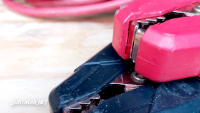
Youtube: googlevideo.com, youtube-nocookie.com.
We've all left our lights on overnight by mistake and found our engines won't start in the morning. It's happened. Don't deny it. There are a few ways you can get back on the road, though, so don't let it eat you up. We will now look at the most common way to get your dead vehicle up and running quickly after running your battery down, but it requires another car with a charged battery. So go and steal one, then follow this guide.
1. Park your new ride as close as possible to the dead one and open both hoods/bonnets/trunks - the wherever the battery is.
2. Pull your jumper cables from your tool bag, where you definitely didn't forget to put them (![]() Tools You Should Always Carry).
Tools You Should Always Carry).
3. On the donor car, connect the red cable to the positive (+) connector on the battery.
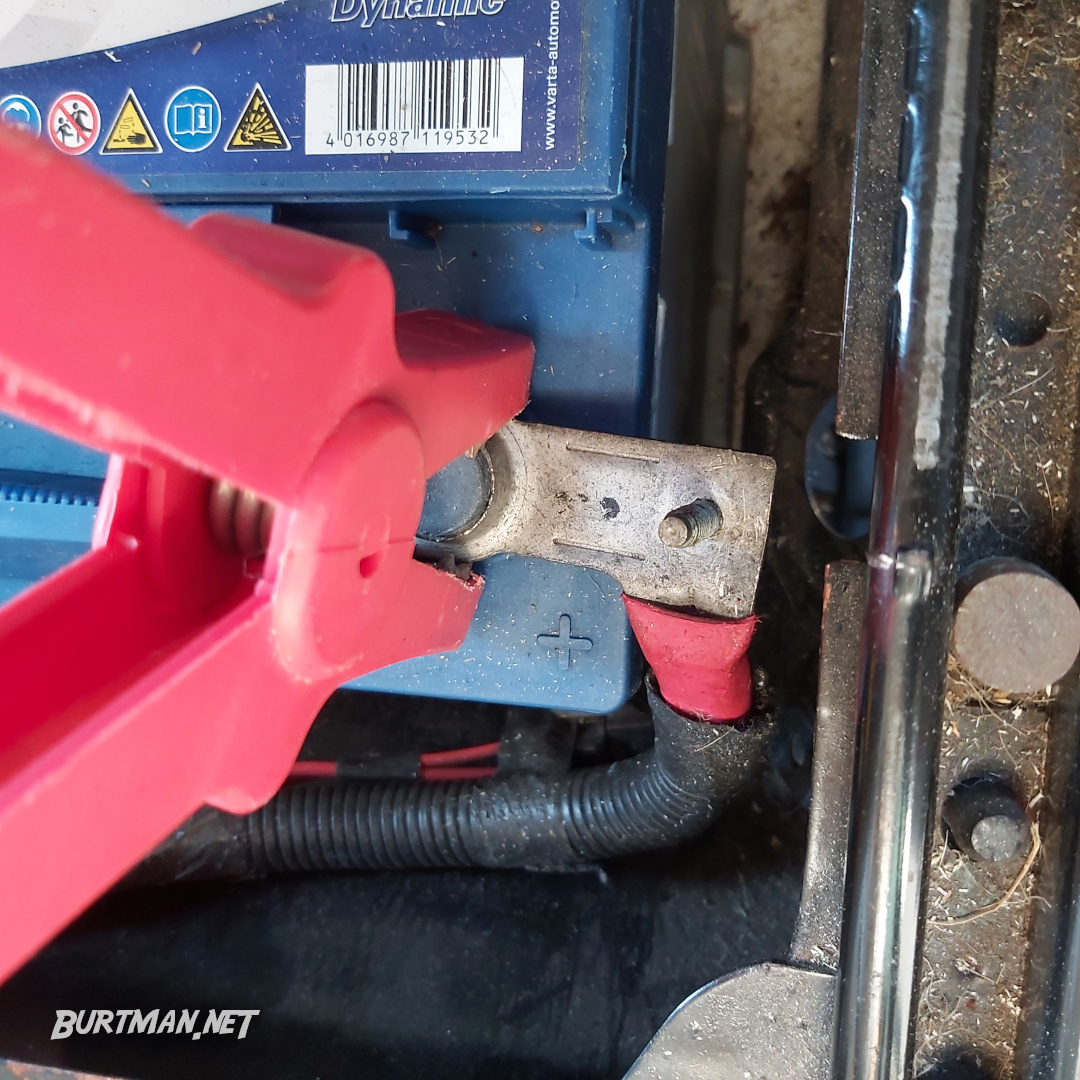
On the car that runs.
4. Where you connect the other end of that cable will depend on whether the battery that needs charging is located in the engine bay. If it is, and it's easy to get to, connect the other end of the red jump lead to the positive (+) terminal on the battery. If the battery is not easy to get to (or not in the engine bay), look for a jump starting point. It will probably be well marked, almost certainly be red, and will quite likely have a + symbol on it.
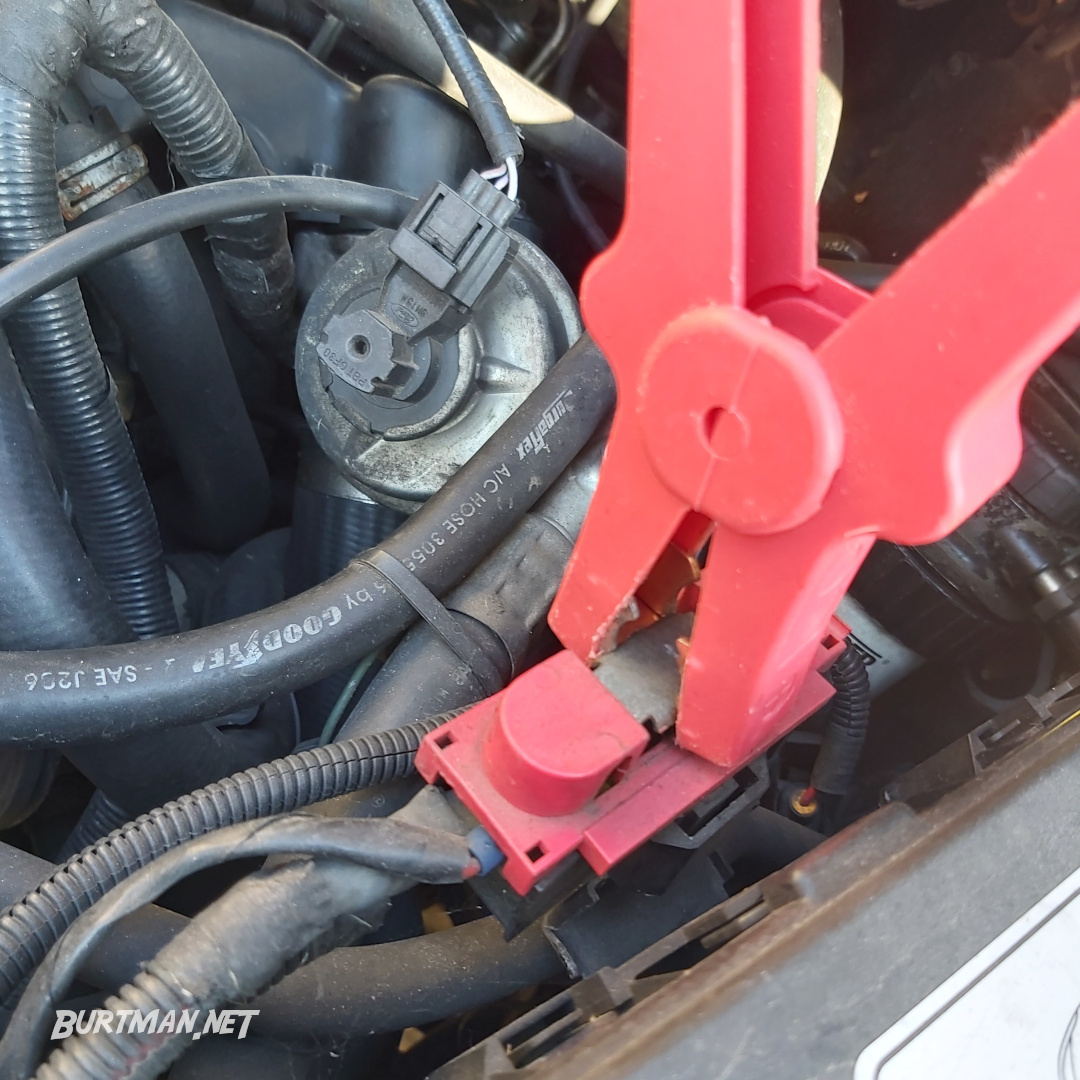
Jump start point in engine bay of the vehicle that doesn't start (the battery is under the driver seat).
5. Connect the black cable to the black (-) connector on the donor battery.
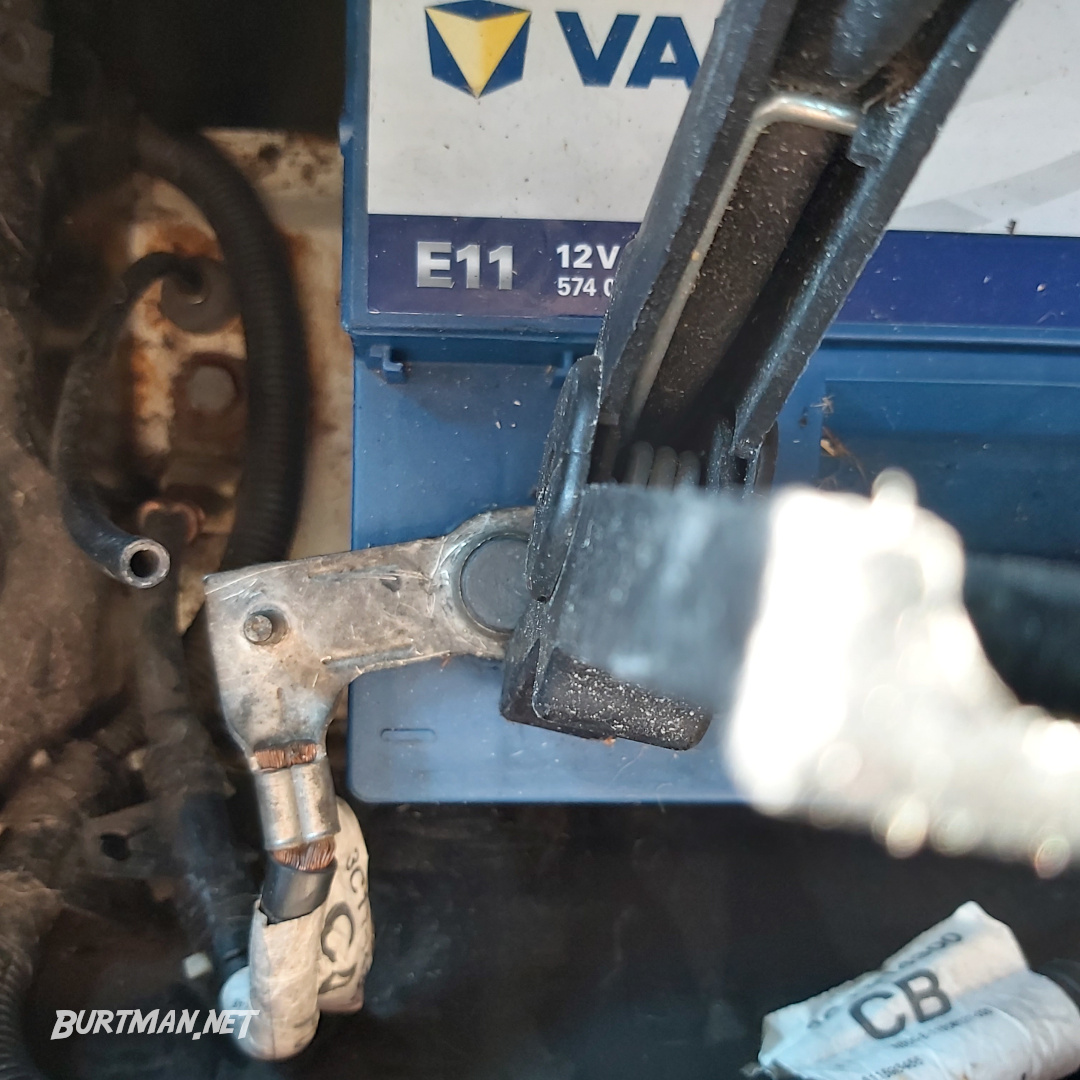
Simple enough.
6. If you connected the red cable directly to your battery, do the same with the black cable, so both batteries are wired directly together (RED TO RED, BLACK TO BLACK).
If not, connect the other end of the black cable to any exposed (unpainted) part of the engine bay or body on the dead vehicle. You could connect it to the frame of the vehicle, the engine block, any protruding bolt, etc.. Avoid directly connecting to the battery unless you really can't find anywhere else to connect it. See the warning above before you do this.
Some options that have worked for me:
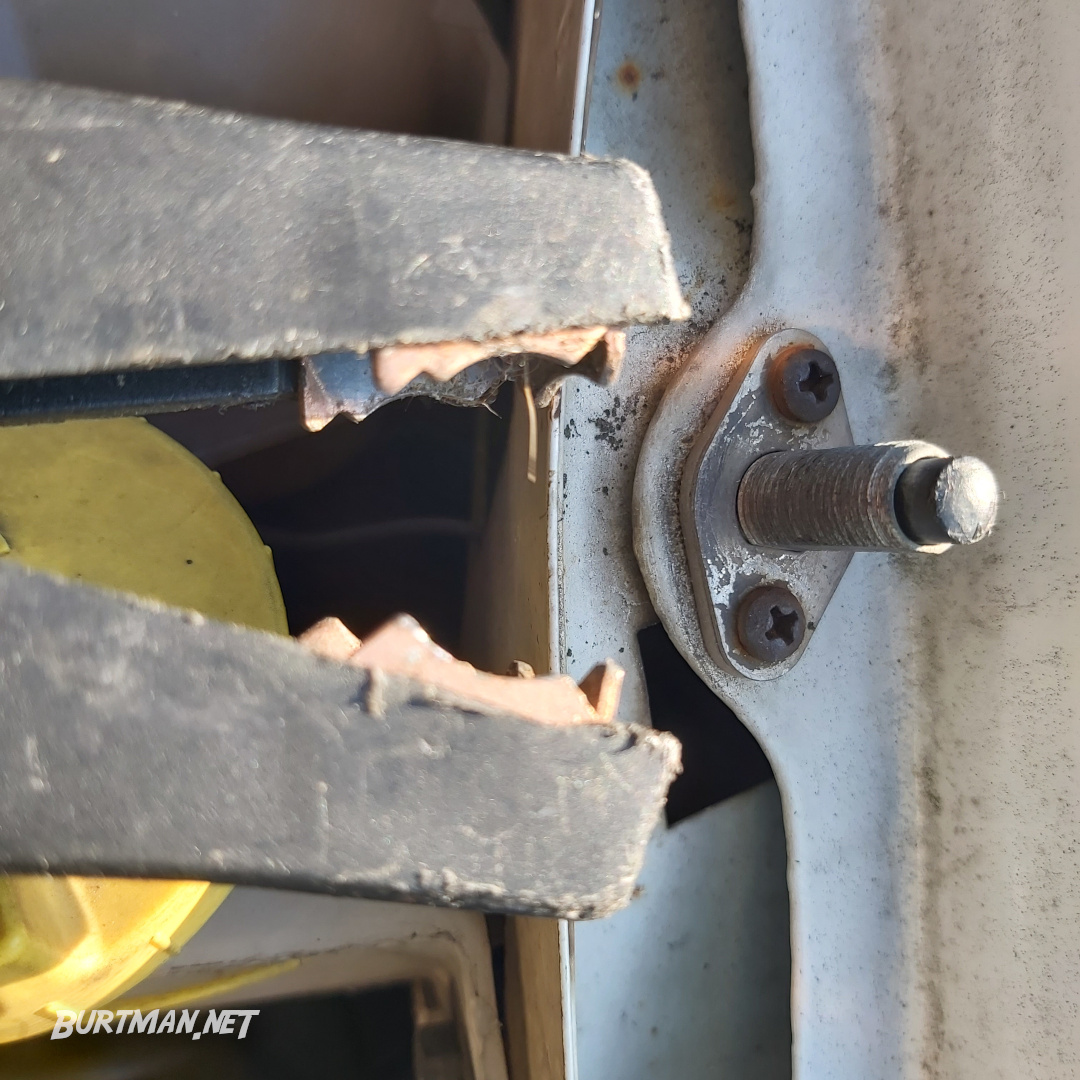
Hood open sensor.
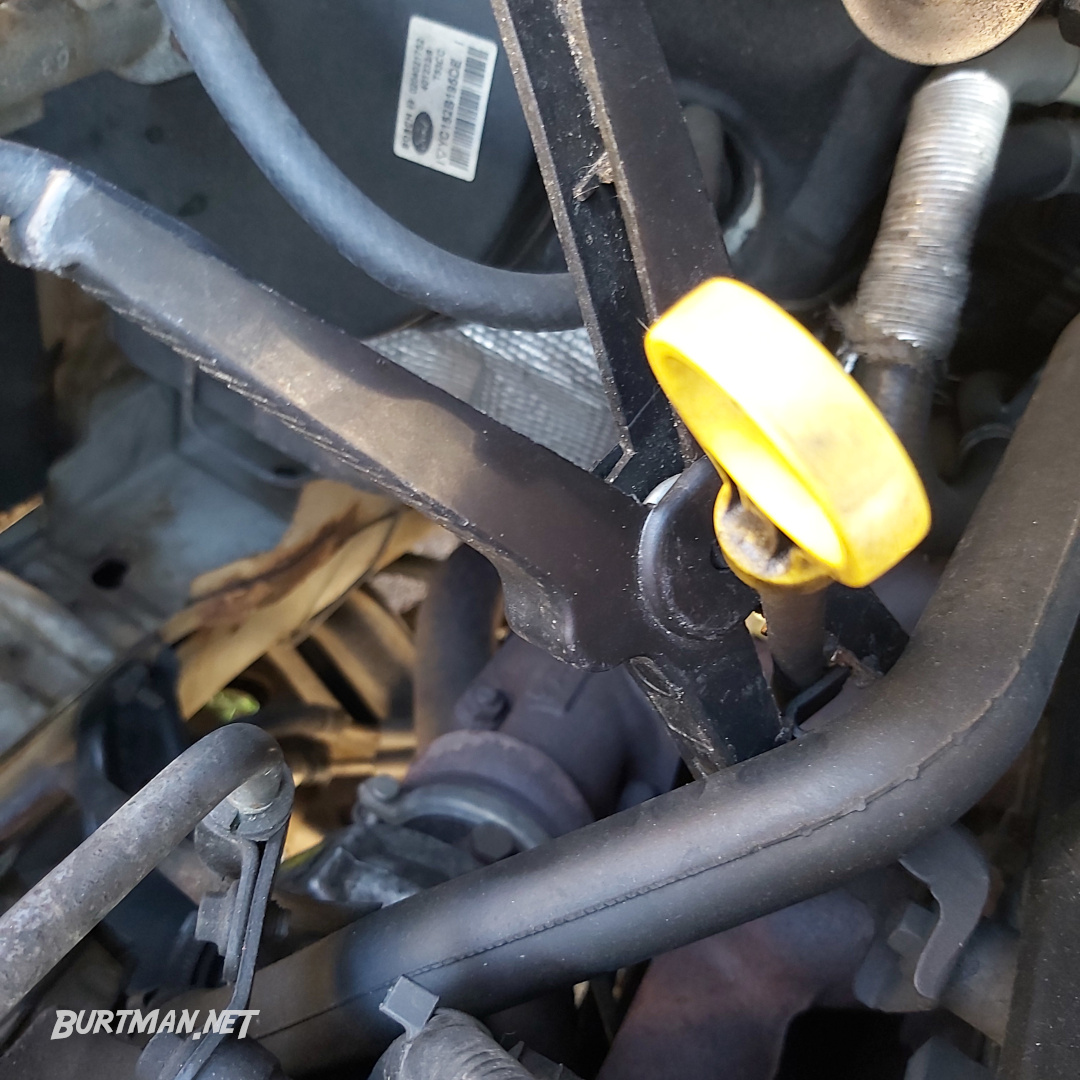
Dipstick pipe.
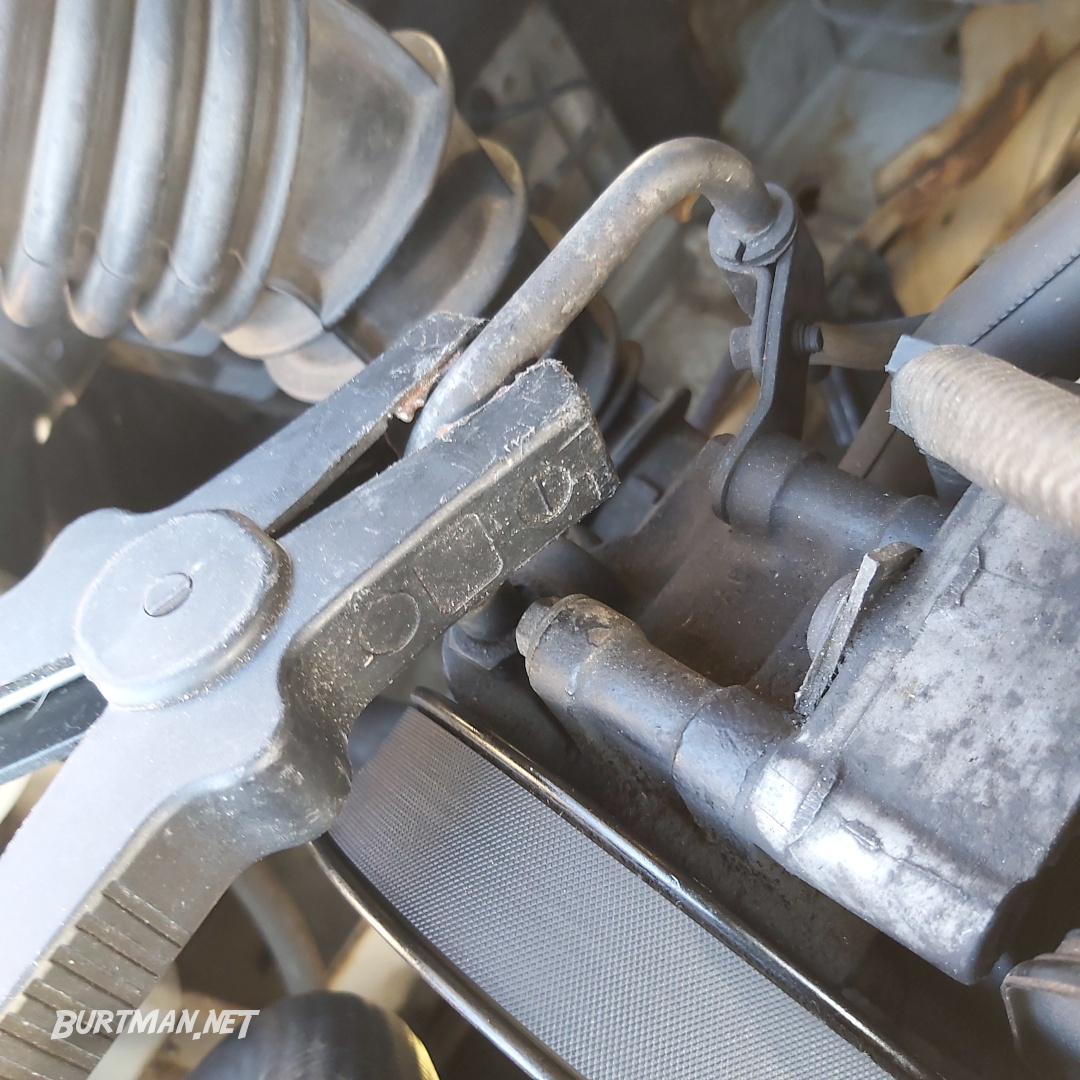
This thing.
7. After checking the cables are all connected securely, start the engine on the donor vehicle and let it run for a few minutes to put some charge into the dead battery. It is not necessary to rev the donor vehicle during this time.
8. After 30 seconds or so, and while the donor vehicle is still running, start the engine on the dead vehicle. If the dead vehicle tries to start, but lacks the power, just turn the ignition off again and let the donor vehicle continue to charge the dead one for a few more minutes. Every unsuccessful attempt to start the dead vehicle will drain a lot of power, requiring more time to recharge, so be patient.
If the dead vehicle just clicks or is completely unresponsive when you turn the key, the battery is deeply drained and this method may not work. It is advisable to remove the dead battery and charge it properly with a mains car battery charger. ![]() Charging Options For Different Battery Types.
Charging Options For Different Battery Types.
If the dead vehicle does start, you can now remove the black cable from both vehicles, and then the red. Removing both cables at the same time is dangerous; if the two cables touch while still connected to the battery of a running vehicle, there could be an explosion.
Now you know the steps, let's hear it all again in this video, provided by "The Art of Manliness", in case you prefer to be told to your face.
You need to enable javascript from Youtube (and possibly others), in order to see this video.




 For When Things Go Wrong (And They Will)
For When Things Go Wrong (And They Will) Read around 3,400 times
Read around 3,400 times For Everyone
For Everyone